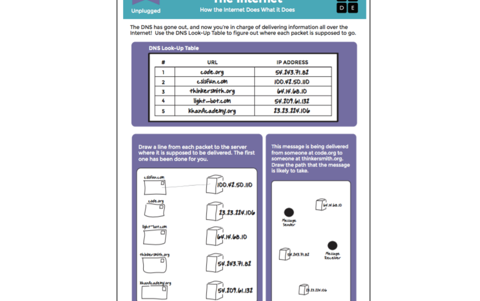Computer science fundamentals

About this assessment task
Computer science fundamentals is a series of lesson plans by Code.org, for teaching computer science to primary students with and without computers. This curriculum provides a teacher guidebook for implementing lessons, with learning and teaching activities, content, printable worksheets and some assessment lessons.
Year band: 3-4, 5-6
AssessmentAssessment
The highlighted section indicates coverage of the relevant parts of the standard.
By the end of Year 4, students:
- create simple digital solutions and use provided design criteria to check if solutions meet user needs. They process and represent data for different purposes. They follow and describe simple algorithms involving branching and iteration and implement them as visual programs. Students securely access and use digital systems and their peripherals for a range of purposes, including transmitting data. They use the core features of common digital tools to plan, create, locate, and share content, and to collaborate, following agreed behaviours. Students identify their personal data stored online and recognise the risks.
By the end of Year 6 students:
- develop and modify digital solutions, and define problems and evaluate solutions using user stories and design criteria. They process data and show how digital systems represent data. Students design algorithms involving complex branching and iteration and implement them as visual programs including variables. They securely access and use multiple digital systems and describe their components and how they interact to process and transmit data. Students select and use appropriate digital tools effectively to plan, create, locate and share content, and to collaborate, applying agreed conventions and behaviours. They identify their digital footprint and recognise its permanence.
Assessment
Description
The curriculum includes online learning modules and unplugged lessons, covering various topics within computer science, including:
- algorithms
- data abstraction computing practice and programming
- computers and communication
- devices (elements of computing devices and networks)
- community, global, and ethical impacts.
Teachers can enrol their class in the online Code.org curriculum and view data about individual performance and progress in programming within each of the topics and for programming constructs (eg branching, iteration, sequences).
Alternatively or additionally, teachers can implement the unplugged curriculum, for which there are lesson plans. Some of the topics also include assessment activities and worksheets. There is a teacher’s guide and student workbook available for teachers to download. This guide also includes advice for teachers on how to facilitate learning activities and questions that can be asked to scaffold students and elicit information about their understanding.
Guidance For Use
Teachers can select and choose lessons that align with the Australian Curriculum: Digital Technologies, or they can undertake a more comprehensive pathway through the modules.Although not mapped to the curriculum, these lessons can support the learning and teaching, and assessment, of a number of content descriptions across the F–6 bands.
Some of the assessment activities could be used within the context of other learning areas. For example, the assessment activity for networks could support assessment from a different learning activity.